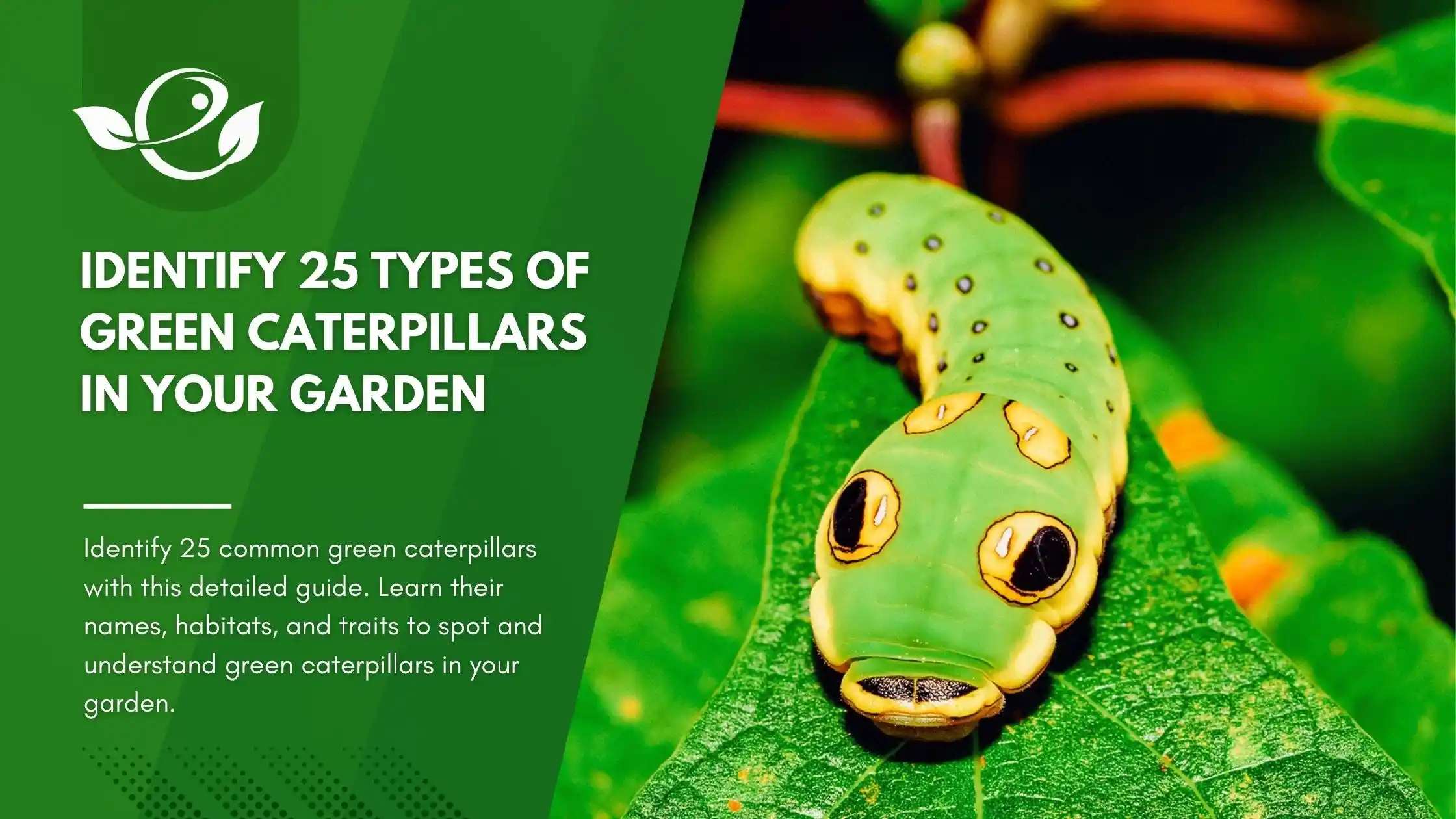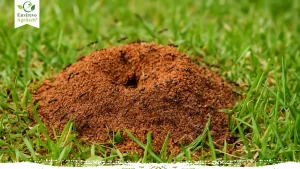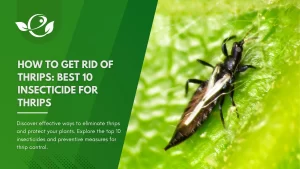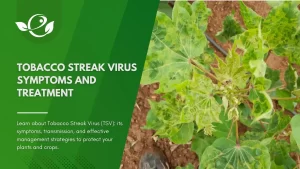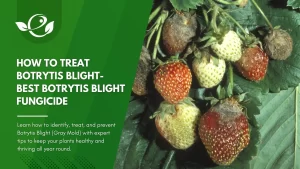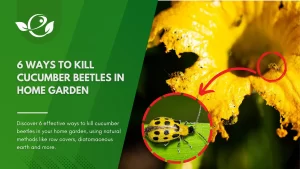Table of Contents
Green caterpillars are among the most common sights in gardens, yet they can be challenging to identify. These fascinating larvae of moths and butterflies play a crucial role in ecosystems, but some species may damage your plants. This guide will help you with green caterpillar identification, highlighting 25 species with detailed descriptions, scientific names, and their habitats.
What Are Green Caterpillars?
Green caterpillars are the larval stage of various moths and butterflies, characterized by their green coloration, which often serves as camouflage against foliage. They primarily feed on leaves and play a crucial role in the ecosystem as herbivores. Some green caterpillars can grow quite large and may be associated with specific host plants. Many species will eventually undergo metamorphosis to become adult butterflies or moths. Their appearance and behavior can vary widely depending on the species.
Why You Should Know About Green Caterpillars?
Green caterpillars are significant within ecosystems as they serve as a food source for various predators, contributing to biodiversity. They can act as indicator species for environmental health and eventually transform into butterflies and moths, which are essential pollinators for many plants. Understanding their life cycle enhances educational opportunities in biology and informs pest management in gardening and agriculture. Additionally, green caterpillars hold cultural value, symbolizing transformation and beauty in many traditions. Overall, knowledge about green caterpillars fosters greater awareness of their ecological roles and the importance of conservation efforts.
How to Identify Green Caterpillars
Green caterpillar identification involves observing specific physical traits and behaviors that set each species apart:
- Coloration: While most are shades of green, some feature stripes, spots, or even multicolored patterns for camouflage. For example, the Monarch caterpillar showcases striking green with white and black bands, while the Cabbage Looper has pale green with white markings.
- Body Shape and Size: Caterpillars vary in size and shape. Some, like the Fall Armyworm, have a robust and slightly flattened body, while others, like the Inchworm, exhibit a slender and elongated form.
- Texture: Examine whether the caterpillar’s body is smooth, hairy, or spiny. For instance, the Saddleback caterpillar has venomous spines, whereas the Giant Swallowtail caterpillar is smooth.
- Head and Markings: Look for unique features such as false eyespots or distinctive markings. The Silver-Spotted Skipper caterpillar has an orange head and large false eyespots that mimic a snake to deter predators.
- Movement Patterns: Some caterpillars, like the Inchworm, move with a looping motion that sets them apart from others.
- Host Plants: Identifying the plants the caterpillars feed on can provide significant clues. For example, Monarch caterpillars are almost exclusively found on milkweed, while the Tomato Hornworm is a common pest on tomato plants.
- Behavioral Traits: Observe their feeding habits and whether they are nocturnal or active during the day. This can help differentiate between species that appear similar at first glance.
Combining these identification methods will enable gardeners to pinpoint the exact species and take the appropriate steps to either nurture or manage them in their garden.
25 Types of Green Caterpillars
1. Tobacco Hornworm
- Scientific Name: Manduca sexta
- Description: Smooth, bright green body with diagonal white stripes and a red “horn” at the rear. This caterpillar can grow up to 4 inches long, making it one of the larger caterpillar species.
- Host plants: Tomato, tobacco, pepper.
- Found In: Gardens across the U.S., especially in regions growing tomatoes, peppers, or tobacco. It is most active during the warm months and is often mistaken for its close relative, the Tomato Hornworm.
- Impact: Known as a major pest for vegetable gardens, the Tobacco Hornworm can quickly defoliate plants if not managed.
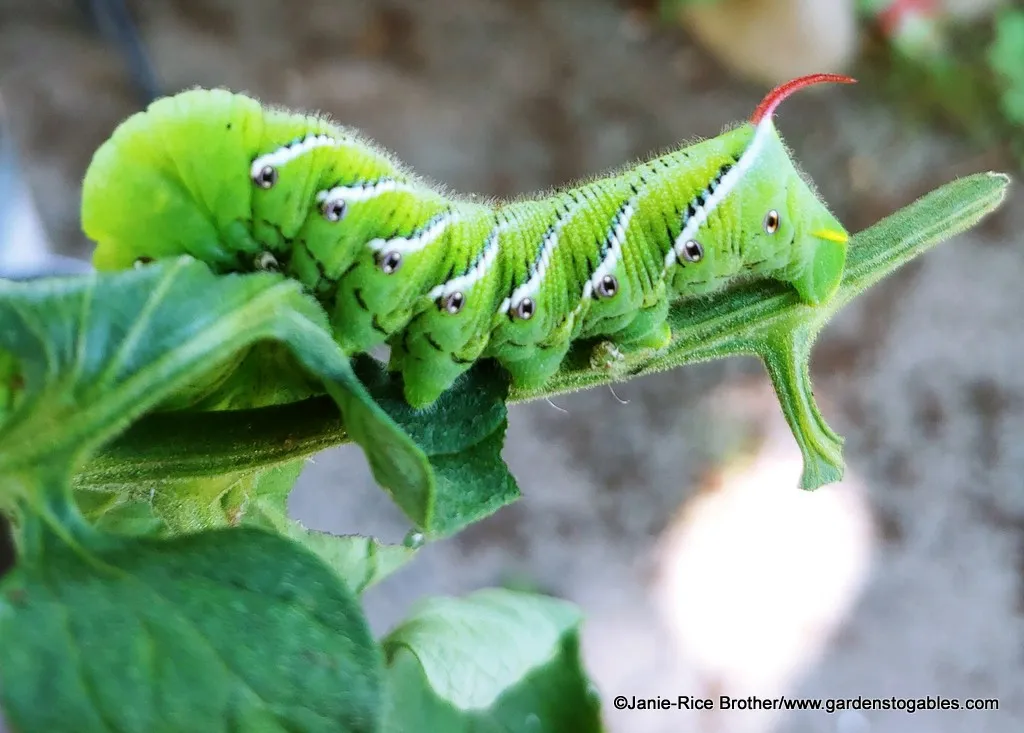
2. Tomato Hornworm
- Scientific Name: Manduca quinquemaculata
- Description: Similar to the Tobacco Hornworm but distinguished by its V-shaped white markings and black “horn.” This species also has a robust body and feeds aggressively on plants in the nightshade family.
- Host plants: Tomato, eggplant, potato.
- Found In: Tomato and potato crops in North America. This caterpillar prefers sunny gardens with ample vegetation.
- Impact: Like the Tobacco Hornworm, it can cause severe damage to crops, particularly tomatoes, making early detection crucial.
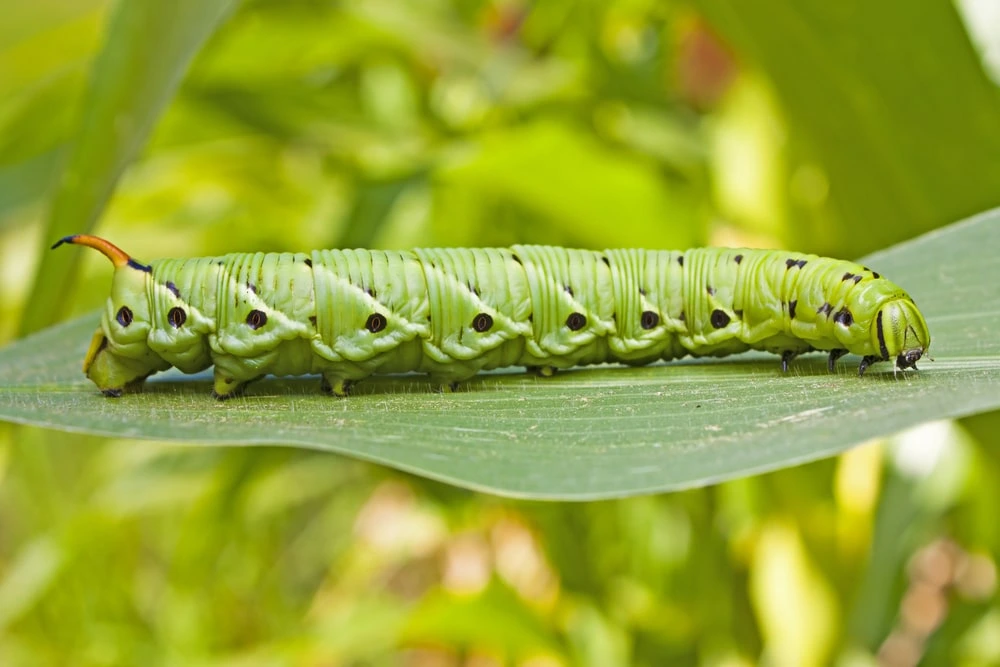
3. Cabbage Looper
- Scientific Name: Trichoplusia ni
- Description: Light green with thin white stripes along the body and a looping movement. Its inchworm-like motion is a key identifying feature. This caterpillar is smaller than hornworms, typically reaching about 1.5 inches in length.
- Host plants: Cabbage, broccoli, kale.
- Found In: Cabbage, broccoli, kale, and other cruciferous plants in the U.S. It thrives in both home gardens and agricultural fields.
- Impact: A common pest, the Cabbage Looper is known for chewing irregular holes in leaves, reducing plant health and yield.
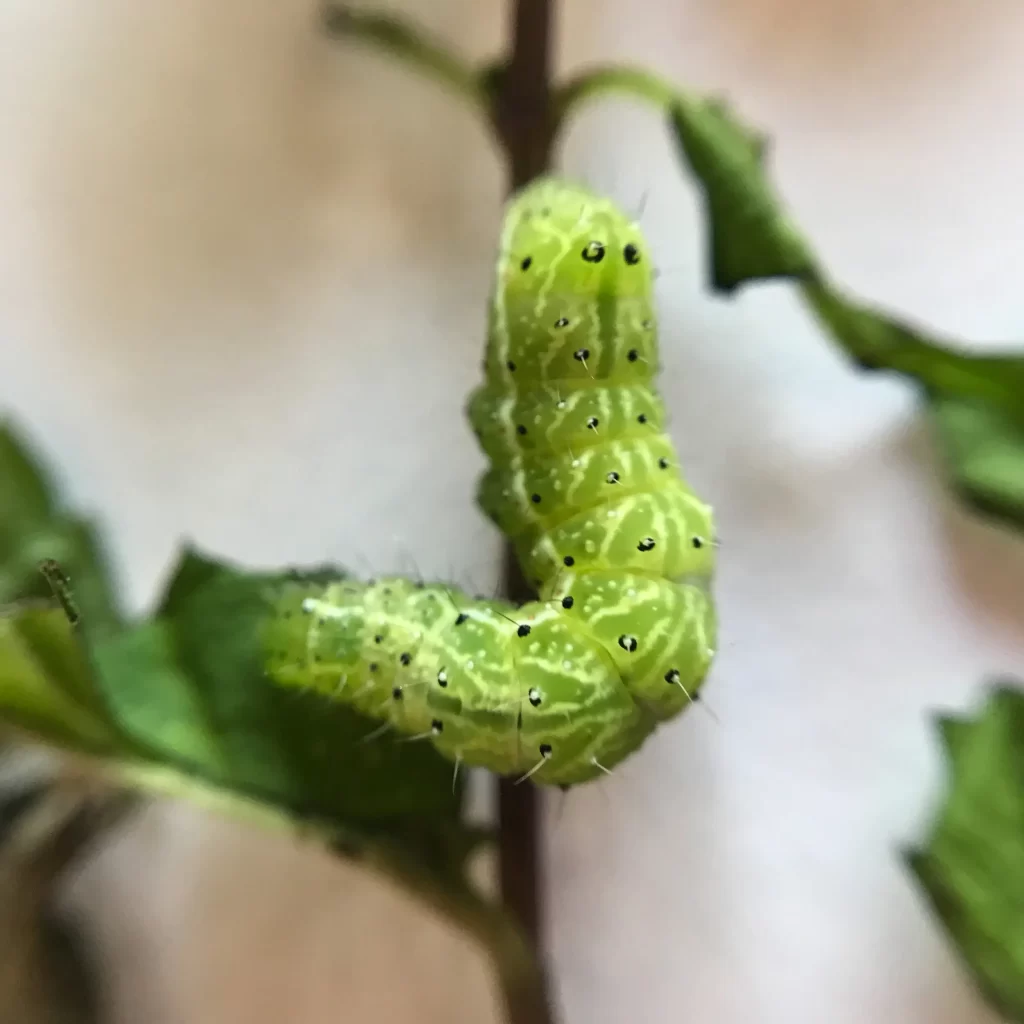
4. Luna Moth Caterpillar
- Scientific Name: Actias luna
- Description: Plump and bright green with yellow lines and small spiny projections. This caterpillar has a translucent quality, and its size can reach up to 3 inches.
- Host plants: Walnut, hickory, sumac.
- Found In: Eastern U.S. forests, feeding on walnut, hickory, and birch trees. This species prefers wooded areas and is rarely found in urban settings.
- Impact: Non-pest. The Luna Moth caterpillar is harmless to plants and transforms into one of North America’s most beautiful moths.
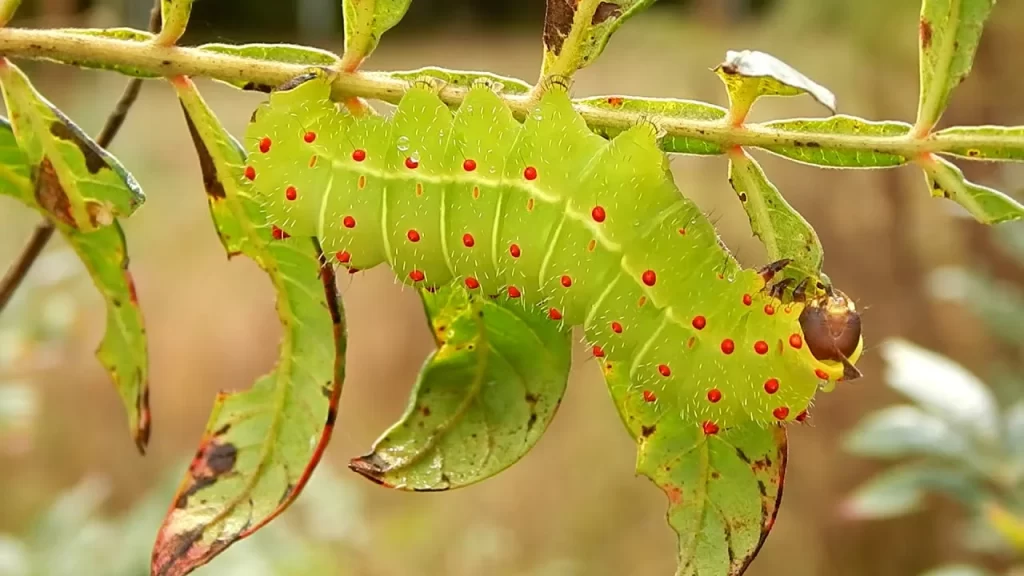
5. Spicebush Swallowtail Caterpillar
- Scientific Name: Papilio troilus
- Description: Bright green with large eye-like spots near the head to deter predators. The caterpillar’s unique mimicry makes it resemble a small snake, providing excellent camouflage.
- Host plants: Spicebush, sassafras.
- Found In: Eastern and southeastern U.S., particularly in spicebush and sassafras plants. It is often seen in wooded areas and along garden edges.
- Impact: Non-pest. This caterpillar is an important part of the pollinator ecosystem, eventually transforming into the striking Spicebush Swallowtail butterfly.
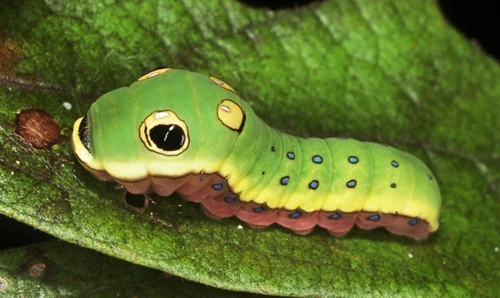
6. Eastern Tiger Swallowtail Caterpillar
- Scientific Name: Papilio glaucus
- Description: Chunky green body with fake “eyes” and a yellow stripe near the head. These eye-like markings are an effective defense against predators, making it appear larger and more threatening.
- Host plants: Cherry, tulip tree, birch.
- Found In: Eastern U.S., typically on cherry, tulip trees, and birches. This species is often found in suburban gardens and parks.
- Impact: Non-pest. This caterpillar is harmless to most plants and plays a vital role in supporting butterfly populations.

7. American Dagger Moth Caterpillar
- Scientific Name: Acronicta americana
- Description: Light green body with long black bristles that resemble tiny spikes. While visually striking, it is important to handle this caterpillar with care as its bristles can cause skin irritation.
- Host plants: Maple, oak, birch.
- Found In: Eastern North America, feeding on maple, oak, and birch trees. It is commonly found in forested areas during late summer and early fall.
- Impact: Non-pest. Although harmless to plants, its defensive bristles make it a caterpillar to admire from a distance.
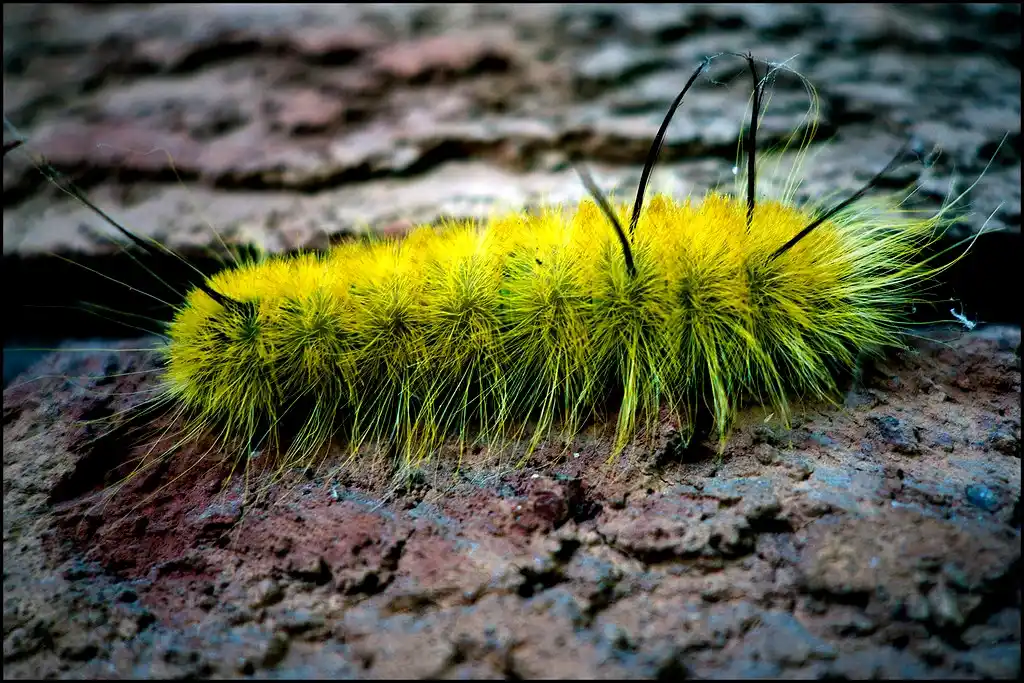
8. Polyphemus Moth Caterpillar
- Scientific Name: Antheraea polyphemus
- Description: Large, green caterpillar with diagonal white stripes and red bumps. This species can grow up to 4 inches long and is known for its voracious appetite during the larval stage.
- Host plants: Oak, maple, birch.
- Found In: Across the U.S., primarily on oak, maple, and birch trees. It is one of the most widespread giant silk moths.
- Impact: Non-pest. It is a beneficial species, playing a key role in the ecosystem as a food source for birds and other predators.
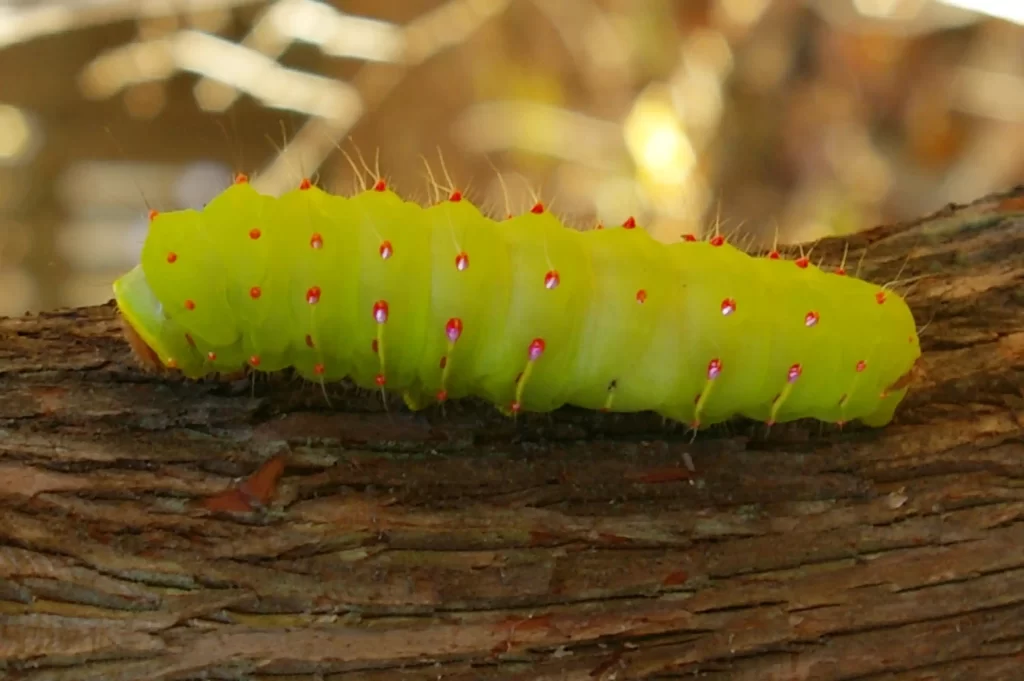
9. Cecropia Moth Caterpillar
- Scientific Name: Hyalophora cecropia
- Description: Bright green with prominent spiny tubercles colored blue and orange. This species is among the largest caterpillars in North America, often exceeding 4 inches in length.
- Host plants: Cherry, birch, apple.
- Found In: Eastern U.S., feeding on cherry, apple, and birch trees. It prefers areas with a mix of deciduous trees and shrubs.
- Impact: Non-pest. Its remarkable size and coloration make it a favorite among nature enthusiasts and photographers.
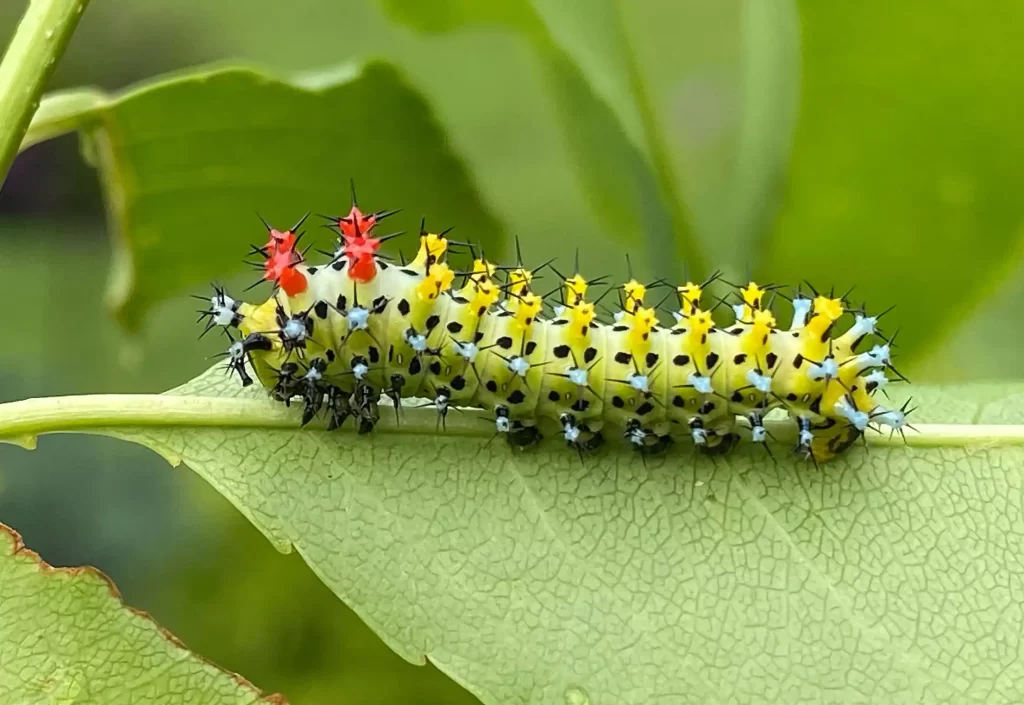
10. Io Moth Caterpillar
- Scientific Name: Automeris io
- Description: Light green with venomous spines that can cause irritation upon contact. The spines form rows along the caterpillar’s back, making it both beautiful and potentially harmful.
- Host plants: Corn, roses, oak.
- Found In: Southern and eastern U.S., on corn, roses, and oak. This caterpillar is often found in gardens and forested edges.
- Impact: Caution needed. While it is not a plant pest, its venomous spines can cause pain to humans and pets.
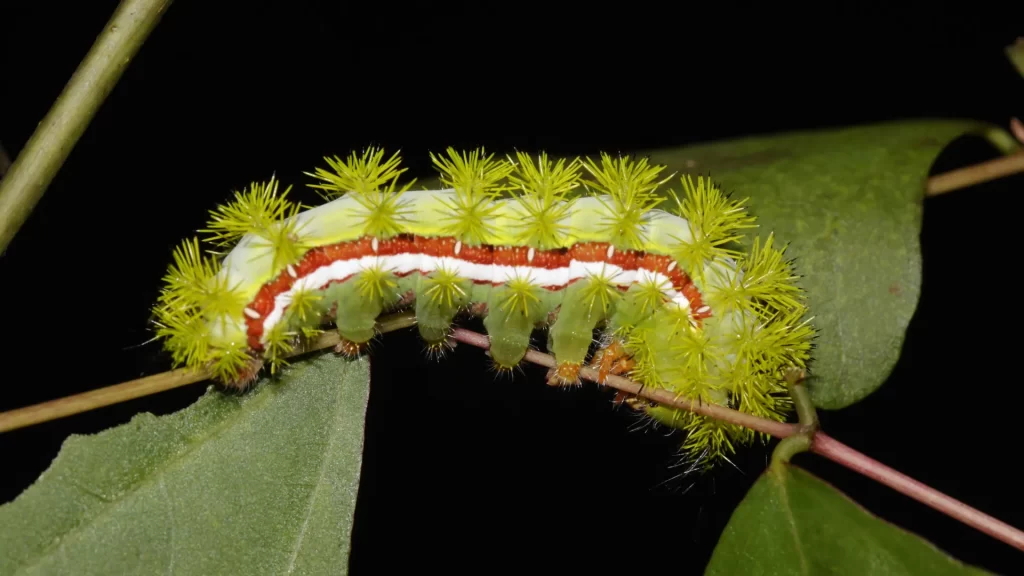
11. Monarch Butterfly Caterpillar
- Scientific Name: Danaus plexippus
- Description: Monarch butterfly caterpillars are striking with their green, white, and black striped pattern. They have two pairs of black filaments, one on each end of their body, which serve as a defense mechanism to confuse predators. They feed exclusively on milkweed, making them easy to identify if you grow this plant in your garden.
- Host plants: Milkweed.
- Found In: Throughout North America, especially in areas where milkweed grows. These caterpillars are particularly prevalent in meadows, fields, and home gardens with milkweed.
- Impact: Non-pest. Monarch caterpillars are essential pollinators and a cornerstone species for biodiversity. Protecting them supports their declining population and ensures the survival of Monarch butterflies.
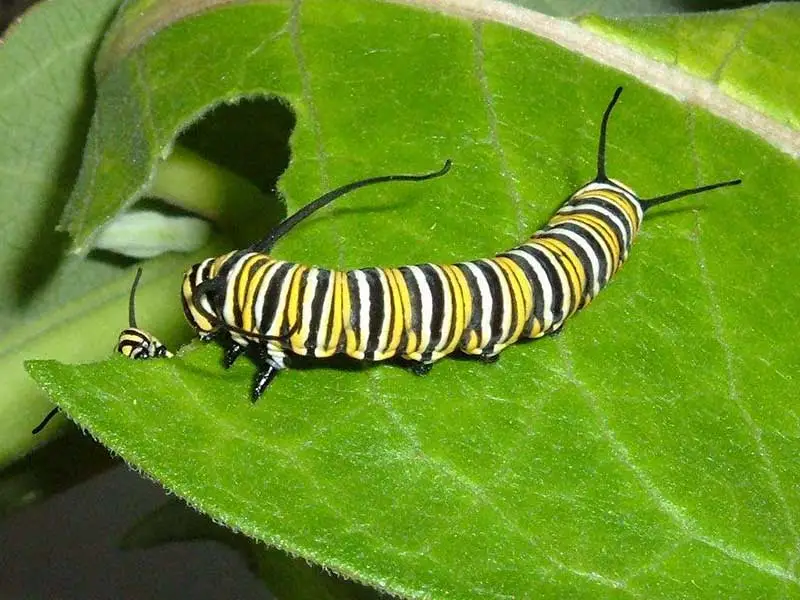
12. Spiny oak slug caterpillar
- Scientific Name: Isaac inachus
- Description: The Spiny Oak Slug Caterpillar is easily recognizable due to its distinctive appearance. It has a soft, slug-like body covered in prominent spines and bristles, which can deter predators. The body color ranges from greenish to brown, often blending in with its surroundings, and it has a distinctive shape that resembles a slug.
- Host Plants: Oak trees, particularly white oak (Quercus alba), and can also be found on other hardwoods such as hickory and maple.
- Found In: Eastern United States
- Impact: The Spiny Oak Slug Caterpillar, as a herbivore, significantly impacts oak tree health, particularly during population outbreaks that lead to defoliation.
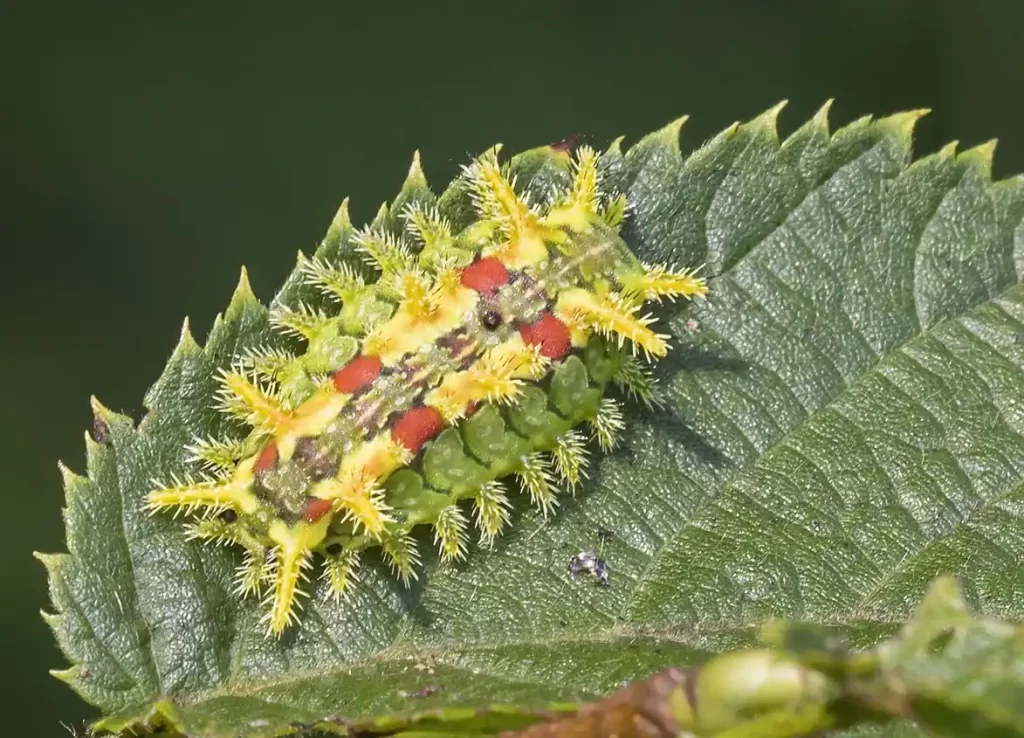
13. Silver-Spotted Skipper Caterpillar
- Scientific Name: Epargyreus clarus
- Description: A plump, green caterpillar with a distinctive orange head and two false eyespots near its neck. These spots give it a snake-like appearance to deter predators. Its body is smooth, with a faint white stripe running lengthwise.
- Found In: North America, particularly in areas with legumes such as black locust and wisteria. It thrives in gardens, parks, and forest edges.
- Impact: Non-pest. These caterpillars are not harmful to plants and are an important part of the ecosystem, eventually becoming swift-flying butterflies.
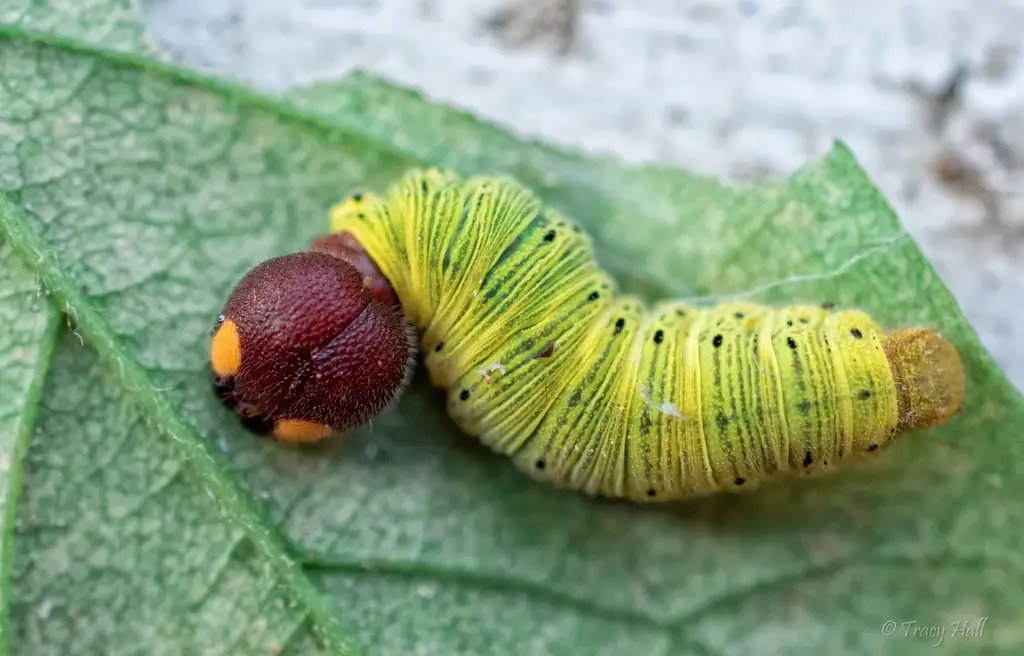
14. Imported Cabbageworm
- Scientific Name: Pieris rapae
- Description: The Imported Cabbageworm is a velvety green caterpillar with faint yellow stripes running along its body. It is the larva of the Small White Butterfly, and its green coloration blends well with cabbage leaves, making it difficult to spot.
- Found In: Gardens across North America, especially where cabbage, kale, and other cruciferous vegetables are grown.
- Impact: Major pest. This caterpillar is notorious for causing extensive damage to leafy vegetables by chewing irregular holes in leaves, which can significantly reduce crop yields.
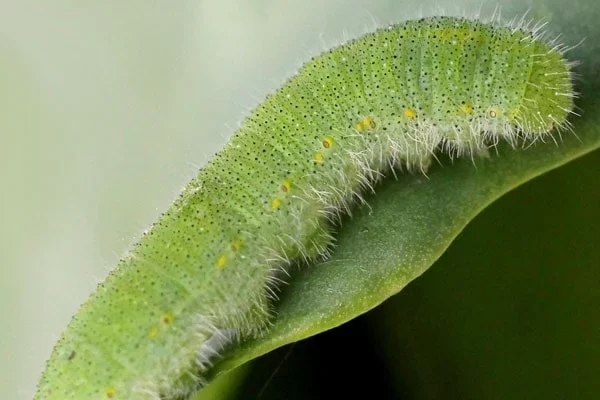
15. White-Lined Sphinx Moth Caterpillar
- Scientific Name: Hyles lineata
- Description: A large caterpillar with a smooth green body adorned with diagonal white stripes and small orange spots. Some individuals may exhibit yellow or black coloration depending on the region and diet.
- Found In: Across the U.S., particularly in gardens with evening primrose, grapevines, or purslane. These caterpillars prefer open, sunny habitats.
- Impact: Non-pest. Although they can consume a significant amount of foliage, they are not considered harmful and eventually become beautiful moths.
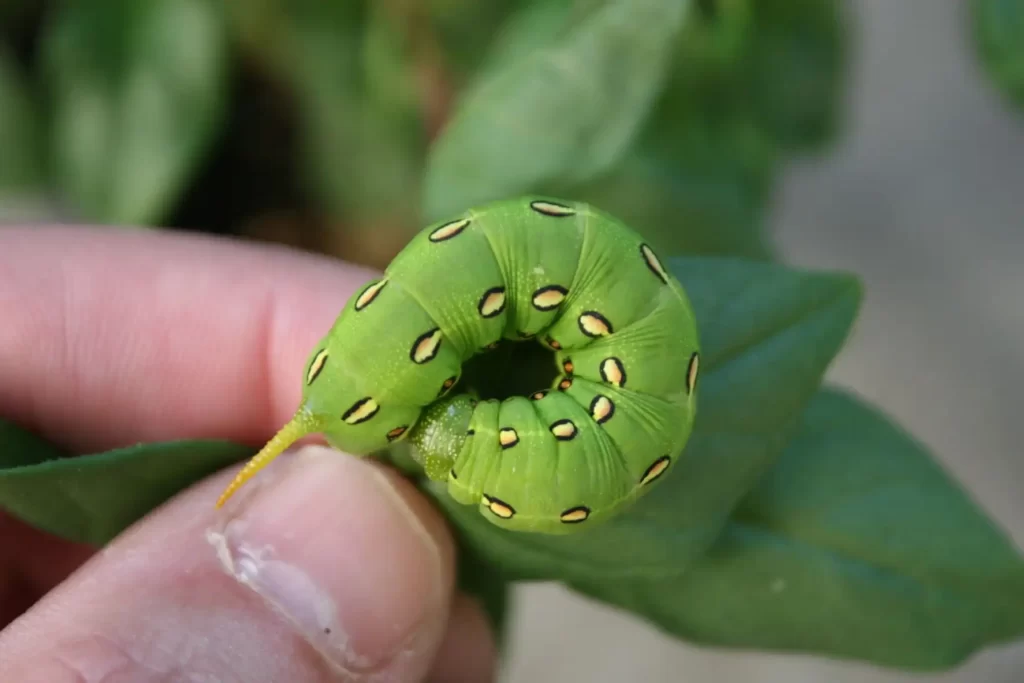
16. Rustic sphinx moth caterpillar (hornworm)
- Scientific Name: Manduca rustica
- Description: The Rustic Sphinx Moth Caterpillar, also known as the Tomato Hornworm caterpillar, is characterized by its large size, typically reaching up to 4 inches in length. Its coloration varies from green to brown with distinctive diagonal white stripes down the sides. The body is soft and fleshy, often having a horn-like structure on the tail end.
- Found In: North America, particularly in gardens, agricultural fields, and areas with abundant vegetation.
- Host Plant: The Rustic Sphinx Moth Caterpillar primarily feeds on the leaves of many plants, including tobacco, tomato, eggplant, and other members of the nightshade family
- Impact: The feeding can lead to significant defoliation of host plants, particularly in high populations.
- Status: Pest
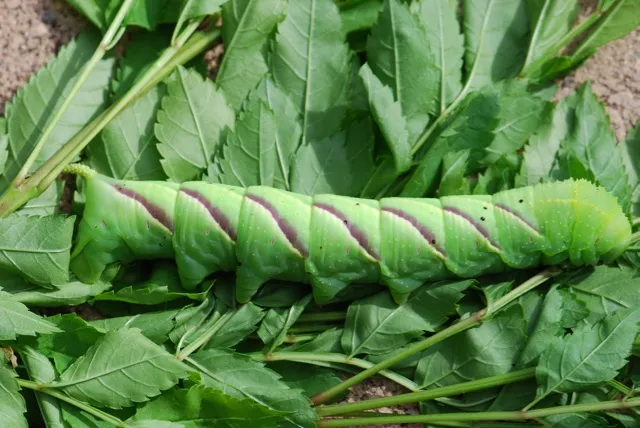
17. Cloudless Sulphur Caterpillar
- Scientific Name: Phoebis sennae
- Description: The Cloudless Sulphur caterpillar is bright green with faint yellow or white longitudinal stripes. Its smooth body and slim build make it less conspicuous. It primarily feeds on cassia and senna plants.
- Found In: Southern U.S. states, especially in gardens and wildlands with host plants.
- Impact: Non-pest. These caterpillars are crucial for butterfly populations and do not cause significant damage to their host plants.
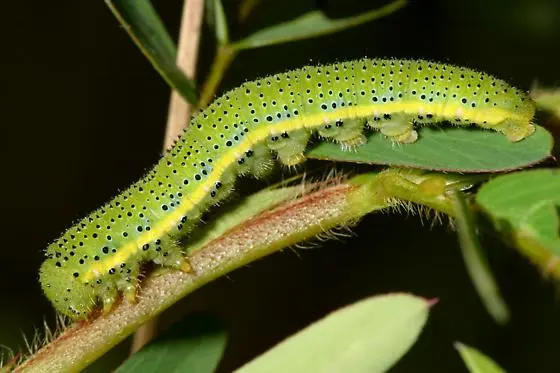
18. Rosy maple caterpillar (green-striped mapleworm)
- Scientific Name: Dryocampa rubi
- Description: Also known as the green-striped mapleworm, is a distinctive medium-sized caterpillar characterized by its neon green color, black dots, and faint white stripes. As it matures, it develops short black spines and features a reddish-orange head with black antennae and a red streak at the rear. Typically growing to about 5 centimeters (2 inches) in length
- Found In: Eastern United States to southeastern Canada
- Impact: True to their name, rosy maple larvae feed on maples, their host plants. It generally does not pose a serious threat.
- Status: Neutral
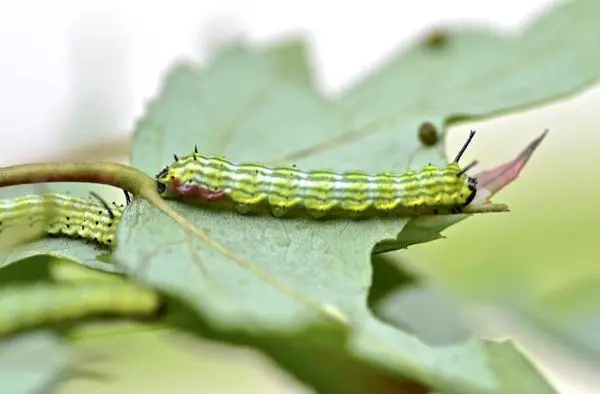
19. Oleander hawk moth caterpillar
- Scientific Name: Daphnis nerii
- Description: Oleander hawkmoth caterpillars can grow up to 13 centimeters long and are characterized by their apple green bodies adorned with white and blue freckles, white side stripes, and a row of black spots. They also possess false “eyes” that enhance their intimidating appearance to deter predators.
- Host Plants: Primarily feeds on plants in the family Apocynaceae, especially oleander
- Found In: North America, southern Europe, Asia, and Africa.
- Impact: While it is generally considered a pest due to its feeding habits, which can lead to significant defoliation of oleander and other host plants, it also serves a vital role in the ecosystem. The caterpillar can negatively affect ornamental gardens and landscapes.
- Status: Pest
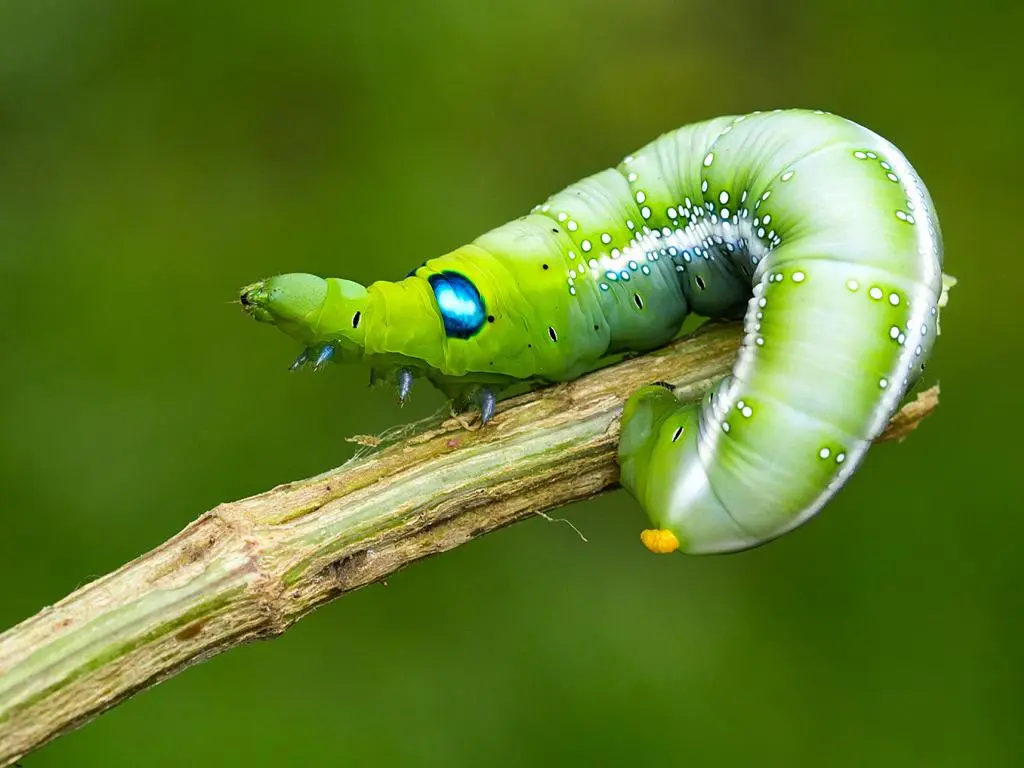
20. Juniper Hairstreak Caterpillar
- Scientific Name: Callophrys gryneus
- Description: A tiny green caterpillar with faint white stripes running lengthwise. Its small size and coloration make it blend in perfectly with juniper foliage, which it feeds on.
- Found In: North America, particularly in areas with juniper trees or shrubs.
- Impact: Non-pest. This caterpillar causes minimal damage and eventually transforms into the beautiful Juniper Hairstreak butterfly.
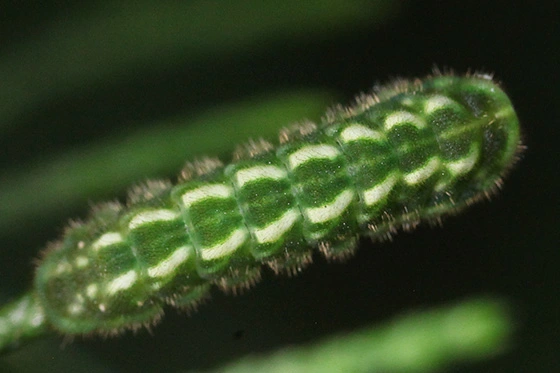
21. Emerald Moth Caterpillar
- Scientific Name: Hemithea aestivaria
- Description: Bright green with a slender body and small ridges along its sides. Its coloration mimics the leaves it feeds on, offering excellent camouflage.
- Found In: Across North America, particularly in wooded areas with deciduous trees.
- Impact: Non-pest. It is harmless to plants and an important part of the forest ecosystem.
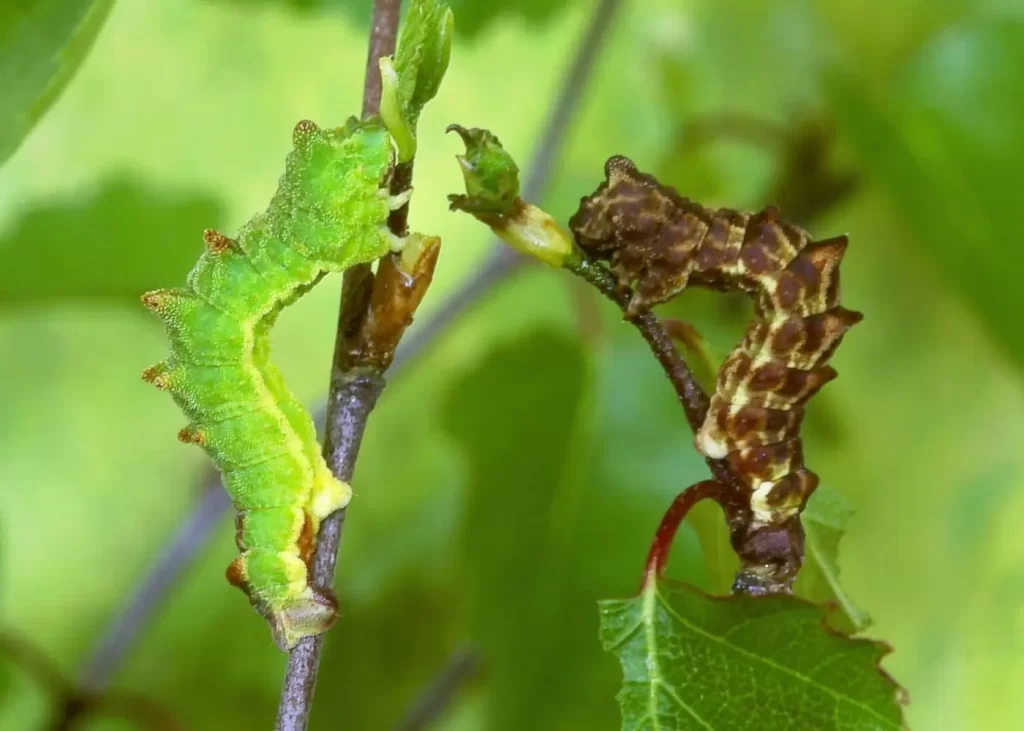
22. Green Cloverworm Caterpillar
- Scientific Name: Hypena scabra
- Description: Slim and green with a faint white stripe along each side. Its smooth body and small size make it inconspicuous. It feeds primarily on legumes, including clover and soybeans.
- Found In: Across the U.S., particularly in fields and gardens with clover or soybeans.
- Impact: Minor pest. While it can cause defoliation, its overall damage is typically manageable.
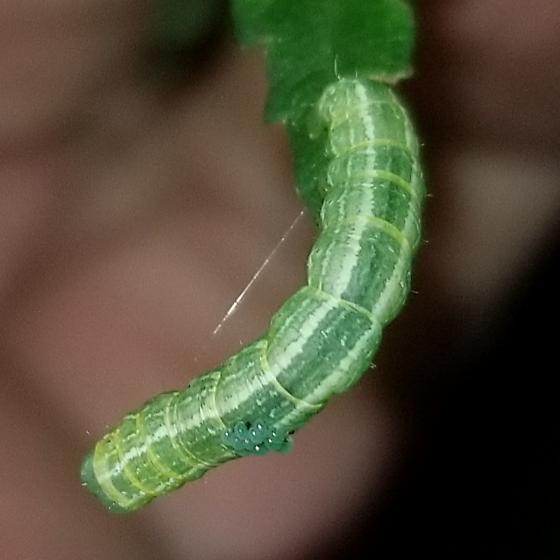
23. Saddleback Caterpillar
- Scientific Name: Acharia stimulea
- Description: Bright green with a distinct saddle-like marking in the middle of its back. This marking is brown, surrounded by white. The caterpillar is also covered in venomous spines that can cause irritation upon contact.
- Found In: Eastern U.S., particularly in wooded areas and gardens.
- Impact: Caution needed. While it does not cause significant plant damage, its spines can be painful to humans and animals.
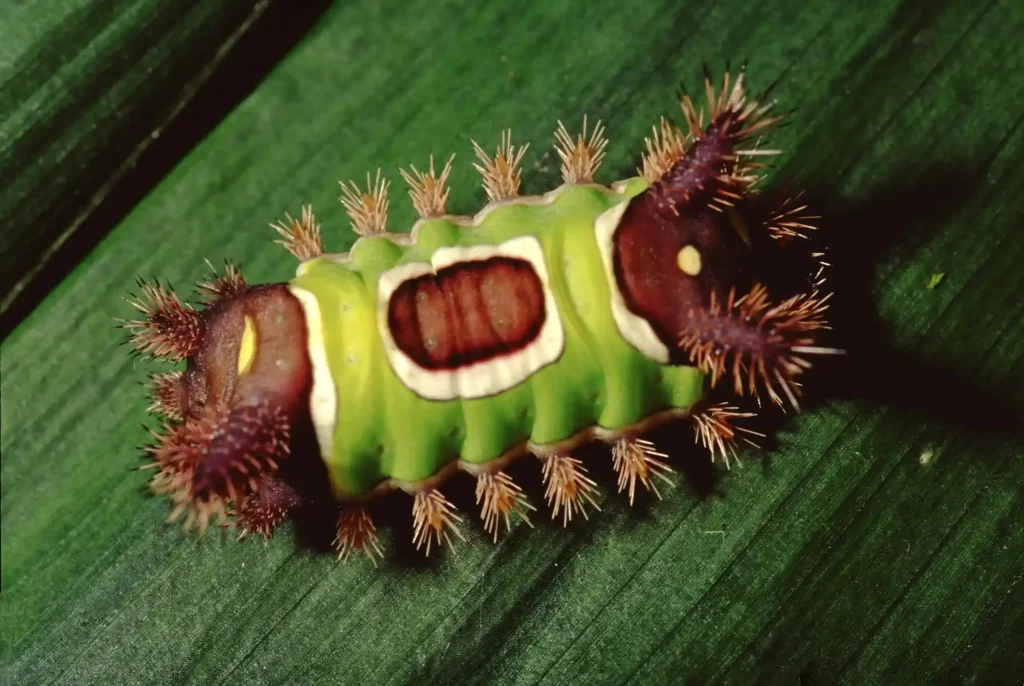
24. Hickory Horned Devil Caterpillar
- Scientific Name: Citheronia regalis
- Description: The Hickory Horned Devil Caterpillar is one of the largest caterpillars in North America, reaching lengths of up to 6 inches. It is brightly colored, typically green with yellow or orange spines and prominent horn-like projections on its back. This unique appearance helps to discourage predators by creating a fearsome look.
- Host Plants: Thiss Caterpillar feeds primarily on hickory trees, but it can also be found on other hardwoods, including walnuts and pecans.
- Found In: Eastern United States and parts of Canada
- Impact: It typically causes minimal damage to trees. Some defoliation may occur if populations are high, but hickory trees can usually tolerate some level of feeding.
- Status: Neutral
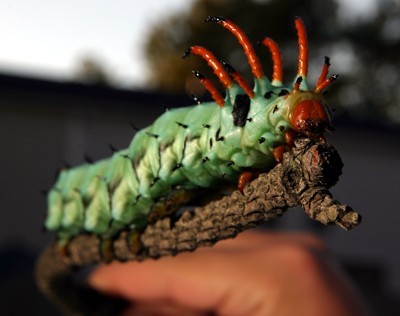
25. Imperial Moth Caterpillar
- Scientific Name: Eacles imperialis
- Description: The Imperial Moth Caterpillar is notable for its striking appearance, featuring a large, green body adorned with bright yellow or orange spines and tubercles. These spines give it a distinct and exotic look. The caterpillar can reach up to 4 to 5 inches in length and has a somewhat segmented body.
- Host Plants: species from the family Anacardiaceae (e.g., sumac, poison ivy) and other broadleaf trees, such as oaks, hickories, and maples.
- Found In: North America, particularly in the eastern United States and parts of Canada
- Impact: the impact on the overall health of established trees is usually minimal. They play a role in the ecosystem as both herbivores and prey for various birds and other predators.
- Status: Neutral
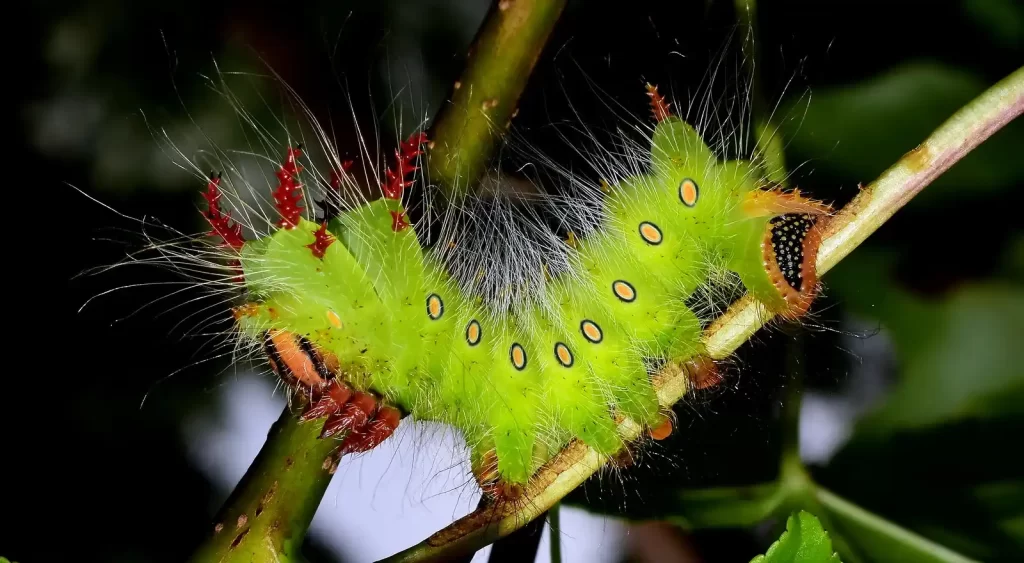
FAQs About Green Caterpillars
What do the green caterpillars turn into?
Green caterpillars transform into moths or butterflies, depending on their species.
Are green caterpillars venomous?
Most green caterpillars are not venomous, but some, like the Io Moth caterpillar, have spines that can cause skin irritation.
Are green caterpillars okay to touch?
While many green caterpillars are safe to touch, it’s best to avoid handling those with spines or bristles as they may cause irritation.
What does a green inchworm turn into?
A green inchworm typically turns into a moth, as inchworms are larvae of geometer moths.
Can I use green caterpillars as food for my pet reptiles or birds?
Yes, many green caterpillars are safe to feed to pet reptiles or birds, but you should ensure they are non-toxic species and have not been exposed to pesticides.
Can green caterpillars regrow lost body parts?
No, green caterpillars cannot regenerate lost body parts. Severe injuries typically affect their survival and ability to metamorphose into moths or butterflies.
Conclusion
Green caterpillars, with their diverse appearances and roles in the ecosystem, are an essential part of nature. While some species can pose challenges to gardeners by damaging plants, many are integral to the life cycle of moths and butterflies, contributing to pollination and biodiversity. By identifying these caterpillars accurately, you can take informed actions to protect your garden while supporting ecological balance. Remember, every caterpillar you encounter is a step in nature’s intricate dance of growth, survival, and transformation.
